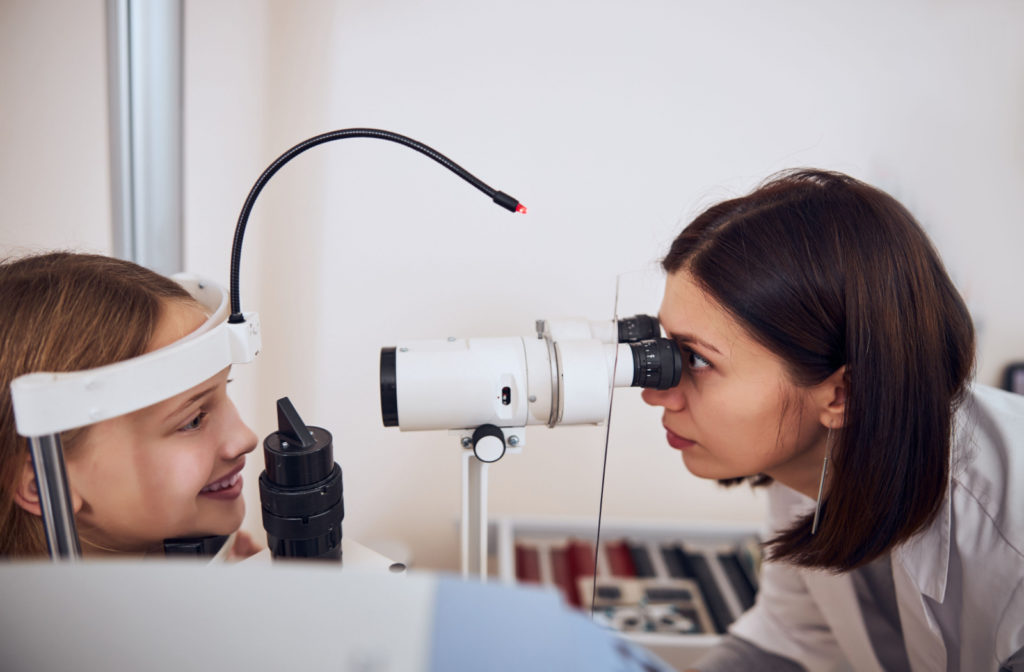Checking Out the most up to date Technical Innovations in Optometry and What They Mean for Eye Doctors
From the precision of Optical Coherence Tomography to the nuanced insights offered by AI-driven analysis tools, these innovations are setting brand-new standards in client evaluation and treatment. As these innovations permeate the practice, eye doctors are encountered with the challenge of welcoming these devices to enhance person results.
Developments in Diagnostic Equipment
Advancing the field of optometry, innovations in analysis devices have changed the means eye treatment professionals analyze and diagnose eye conditions and aesthetic disabilities. The past decade has actually seen significant technological developments, enabling even more detailed and accurate evaluations.
Another secret technology is the intro of sophisticated corneal topography systems, which map the surface curvature of the cornea with precision. These tools are specifically helpful for fitting call lenses and diagnosing corneal conditions. Furthermore, digital retinal imaging has actually transformed conventional ophthalmoscopy, using detailed, scenic sights of the retina that facilitate extensive aesthetic assessments.
The advancement of wavefront aberrometry has actually additionally been crucial, enabling the analysis of refractive errors with unequaled precision (Eye Doctor). This technology aids in tailoring rehabilitative lenses and enhancing surgical results for refractive surgical treatments. Collectively, these analysis innovations encourage eye doctors to supply exceptional person care, guaranteeing early intervention and customized therapy approaches, eventually boosting aesthetic health and wellness results
AI in Individual Administration
Building on the structure of innovative diagnostic devices, the incorporation of synthetic intelligence (AI) in person administration stands for a transformative leap for optometry. AI systems are significantly utilized to boost efficiency, precision, and personalization in individual care.
Additionally, AI-driven systems assist in structured client interactions and management processes. Automated organizing, virtual appointments, and individualized follow-up strategies not only enhance individual contentment but additionally optimize time administration for practitioners. These systems can triage individuals based upon the urgency of their problems, guaranteeing that those in critical need get prompt interest.
Moreover, AI boosts decision-making by providing eye doctors with evidence-based referrals and treatment pathways. By integrating data from digital wellness documents, AI tools use insights that notify professional choices, minimizing the threat of mistakes and boosting client end results. As AI remains to advance, its duty in patient administration will likely increase, improving the landscape of optometric treatment.
Advances in Retinal Imaging
In the realm of optometry, retinal imaging has seen exceptional technological improvements that are improving analysis abilities and client treatment. Innovations such as Optical Coherence Tomography (OCT) and fundus digital photography have transformed how optometrists analyze the retina and visualize. OCT, particularly, supplies high-resolution, cross-sectional pictures of the retina, permitting the detailed evaluation of its layers. This ability is indispensable for early detection and management of conditions like glaucoma, diabetic person retinopathy, and age-related macular deterioration.
Improved imaging modalities like OCT angiography are further refining analysis accuracy. Eye Doctor. Such improvements help with the recognition of min retinal changes that can represent illness development.
Additionally, innovations in expert system are enhancing retinal imaging by making it possible for automatic evaluation of huge datasets. These systems assist optometrists in recognizing patterns indicative of pathology, thus improving analysis precision and efficiency. Collectively, these advancements are changing retinal imaging into a keystone of modern-day eye treatment, boosting end results and expanding restorative possibilities.
Teleoptometry's Growing Duty
Teleoptometry is increasingly becoming an important component of eye care, driven by developments in data and diagnostic devices. As optometry welcomes electronic improvement, teleoptometry promotes remote consultations, allowing eye doctors to expand their solutions past typical borders. This is especially useful in underserved and rural locations where accessibility to specialized eye care is typically restricted. By leveraging high-resolution video conferencing and progressed retinal imaging, optometrists can conduct thorough eye tests from afar, making sure timely diagnosis and treatment.
The assimilation of expert system (AI) further enhances teleoptometry, making it possible for the evaluation of visual information and helping in the detection of eye conditions such as glaucoma and diabetic retinopathy. AI-powered formulas can rapidly translate intricate imaging information, giving eye doctors with beneficial More Info insights that bolster medical decision-making.
In addition, teleoptometry sustains connection of treatment with seamless assimilation with digital health records (EHRs), permitting eye doctors to keep detailed person histories. When seeking advice from with various specialists., this makes certain here are the findings that individuals obtain tailored and consistent treatment also.
In spite of these benefits, challenges continue to be, consisting of guaranteeing information protection and handling patient expectations. Teleoptometry stands for a significant stride towards even more accessible, effective, and patient-centered eye treatment. As modern technology advances, its role is positioned to broaden additionally.

Future Patterns in Eye Care
A myriad of cutting-edge fads is readied to reshape the future of eye care, driven by technological developments and the developing demands of individuals. One considerable pattern is the integration of man-made knowledge (AI) in diagnostics, which promises to enhance the accuracy and efficiency of eye evaluations. AI algorithms can assess huge quantities of data from retinal pictures, potentially spotting conditions like diabetic retinopathy and glaucoma earlier than typical approaches.
Additionally, personalized medication is getting traction in optometry, with genetic testing educating personalized treatment plans. This approach intends to enhance patient end results by tailoring interventions to specific genetic accounts. Wearable innovation, such as wise contact lenses, is likewise on the horizon, offering real-time surveillance of intraocular pressure or sugar levels, hence supplying constant insights into eye and systemic health and wellness.
The fostering of enhanced fact (AR) and online reality (VIRTUAL REALITY) in my company training and patient education and learning is another emerging pattern. These innovations supply immersive experiences that can boost understanding and abilities both for clients and eye doctors. As these fads advance, eye doctors need to stay abreast of technological innovations to give advanced treatment, making certain enhanced patient results and contentment in the dynamic landscape of eye care.
Final Thought

Collectively, these analysis innovations equip eye doctors to provide exceptional client treatment, ensuring very early intervention and customized treatment strategies, inevitably enhancing aesthetic wellness results.

As these modern technologies continue to develop, eye doctors have to adapt and include them into method, eventually maximizing operations efficiency and raising the criterion of eye treatment delivered to people.